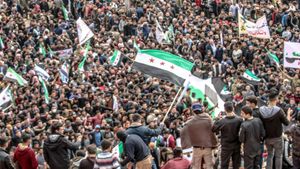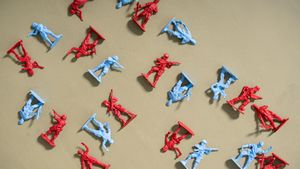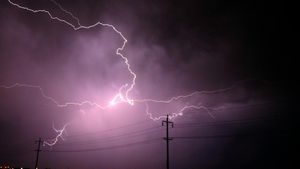JOHANNESBURG — The heart-wrenching loss of life among South African peacekeepers continues, with the recent death of another soldier reported on February 1, 2025. This tragic incident brings the total fatalities among peacekeepers to 18 during violent clashes with the M23 rebel group near Goma, located in eastern Democratic Republic of Congo (DRC).
According to Anadolu Agency, the toll includes 14 South African soldiers, alongside three soldiers from Malawi, and one unidentified peacekeeper from another nation. This lamentable situation stems from the persistent conflict instigated by the M23 rebels, who are alleged to enjoy backing from Rwanda, and have reportedly launched significant offensives aimed at seizing control of the region's abundant natural resources.
The unrest has not only led to the deaths of peacekeepers but has also sparked urgent humanitarian concerns. The United Nations reported last week alone, the violence has claimed at least 700 lives with 2,800 additional injuries already documented. Displacement and dire shortages of food and water have only worsened the humanitarian crisis, prompting international appeals for peace.
Many are now asking: what exactly is South Africa doing within the DRC? Under the mandate of the Southern African Development Community (SADC), South Africa is leading the Southern African Development Community Mission in the Democratic Republic of Congo (SAMIDRC). This deployment was set forth by the SADC involving forces from Malawi and Tanzania, following heavy escalations of violence throughout the region.
Lindy Heinecken, Professor of Sociology at Stellenbosch University, explains the aim of the SAMIDRC is clear—to support the DRC government's efforts to regain control and stability and combat the armed groups destabilizing the eastern provinces. She noted, “The fact is the mission aims to protect civilians, disarm these groups, and uphold the recent ceasefire agreement brokered by regional powers.”
Despite South Africa's long-standing history and prior success with peacekeeping missions, skepticism has arisen over the adequacy of training and equipment for its forces deployed in the DRC. Critics express concern about whether troops are sufficiently prepared to handle the complex environment they now face—an environment populated with over 100 distinct armed groups—each posing frontier challenges against the backdrop of existing political tensions.
Heinecken warns, “There’s been a noticeable decline across years due to budget cuts and the age of military equipment, rendering our soldiers vulnerable even before they engage.” Reports suggest significant resource limitations have drastically affected the mission's effectiveness, prompting fears for the safety of personnel and local populations alike.
These deficiencies are particularly glaring when considering how the well-armed M23 rebels have been able to outgun security forces. The deployment was authorized to have 5,000 troops from contributing nations, yet as noted, only approximately 1,300 have arrived. Limited resources compound the existing challenges, leaving soldiers with inadequate air and tactical support to adequately confront threats.
The international ramifications continue to grow, with Rwanda vehemently opposing SAMIDRC's activities, claiming the mission undermines regional cooperation. The potential impact of this intervention raises questions about not just the legitimacy of South African troops on the ground, but also about the overarching strategy implemented by the regional authorities to stabilize the DRC.
Calls for accountability have echoed from various humanitarian organizations and governmental bodies, particularly related to the reported atrocities committed by the M23, which extend back to historical grievances linked to ethno-national tensions ignited since the 1994 genocide. The human toll from these conflicts can hardly be overstated, emphasizing the dire need for effective intervention to protect civilians and halt the continuing violence.
Reflecting upon these tragic events, Professor Heinecken emphasizes, “It is time for South Africa to critically evaluate the role and readiness of its military. Current equipment challenges showcase the urgent need for modernization and funding to fortify our defense capabilities.”
This complex situation not only reveals the immediate dangers facing peacekeepers but also highlights the significant geopolitical intricacies embedded within the DRC’s political fabric. Without coordinated regional efforts alongside international scrutiny, peace remains elusive, perhaps even at risk of being fundamentally undermined by factors both internal and external. The tragedies we now witness serve as stark reminders of the urgency for change, not only within military ranks but also at the broader institutional levels to secure the safety and well-being of all involved.



